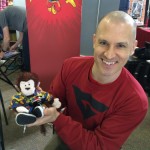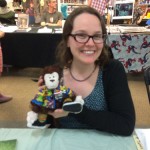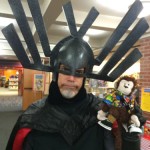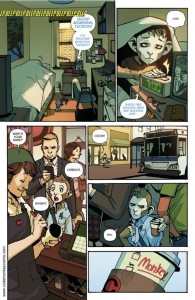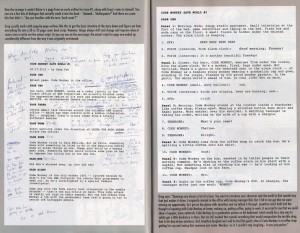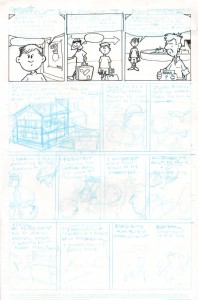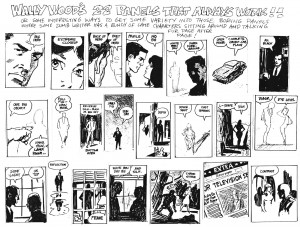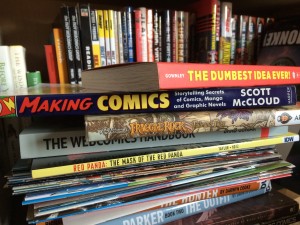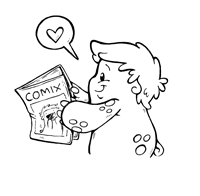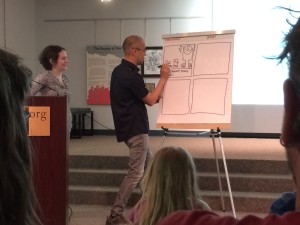
You know how people tell you to go someplace over and over again and you think, “Maybe, when I have time.” I really don’t remember when I first heard something about the Kids Read Comics Convention in Ann Arbor, Michigan what I do know is I ignored it. Maybe I thought I should put that on the old bucket list, or maybe I just never wrote it down… I’m now kicking myself. I know recently some of my friends have pushed for me to go… You know who you are Jim, Chris, Ginger, & Lee. So I bit the bullet decided to take the weekend and blew my mind. I might have a few things wrong- I’m still processing everything.
I’m not a con newbie, I remember attending comic cons since I could drive. I’ve been to New York Comic Con, C2E2, and even trekked out to San Diego a few times… Those are all great, but for me, I’ll take Kids Read Comics. Remember, I’m a teacher, I’m an elementary school teacher, I like comics… This was a con for me and the little kid in me who tends to hide away too often. So what amazing stars of film and tv were there for $40 photo ops and $20 autographs? Umm… No one. It was a con emphasizing the awesomeness of comics, and focusing on the kids who read them. The cost of admission? Ummm… Nothing. Ok you had to bring unbridled joy and love of comics, and a willingness to embrace your inner kid, or at least put up with kids filled with joy. So far it sounds like some weird fantasyland that I dreamed up when I mixed up my hypertension medicine, but it isn’t.
Friday was for the adults, the teachers, librarians, and comic creators. The entire day dealt with lofty topics like “How to teach how to draw,” “The amazing history of comics in America & how they almost disappeared,” a panel of people from all over talking about creating comics, & using comics for learning, and finally a tour of a video game archive that definitely brought back waves of nostalgia. My poor brain was already full after just the pre-conference, but for my students I had to carry on and attempt to survive the first day of the actual con…
Kids Read Comics is divided into a mass of activities for kids of all ages, so many I got lost, and really need to bring an army of MINIons next time to report out. I’ll try to keep it simple by grouping them a bit:
Artist Alley- a chance to meet and talk (face to face) with amazing comic creators. I’m a big fan of the artist alley (once I get over my shyness) but recently I have found a glut of “dystopian zombie apocalypse” comics, or artists who have no concept of what “all ages” means. At Kids Read Comics it was wonderful! Every artist I spoke with had things that kids would like and parents wouldn’t blush at. When talking with the artists before I would buy something they’d usually tell me the age it was meant for, even a warning as to bad language that might work in an upper grade, but not younger kids. It was a dream. I walked out with my wallet a little lighter, but knowing that everything I had could work in my classroom. Here are just a few of the great creators who were at Kids Read Comics (Yes, Cecil needed to be in the picture, and somehow I lost a number of photos I thought I had taken- grrr.).
Quick Draw! & other drawing challenges- be it Quick Draw!, Iron Cartoonist, or Comics Quickfire it’s a great chance to see your new favorite cartoonists in action. As a really old kid what I liked best was seeing how each artist attacked their drawing. A wizard in space with a screwdriver? Sure! The drawings showed the people in the audience that there isn’t a “right” answer, but a lot a creativity can save the day!
Educational Sessions- Sessions geared for teens, or kids of all ages on storytelling technique, basic drawing, all the way to inking. I learned so much from the sessions I went to, these ideas have helped me as I reimagine the direction of My Geek Odyssey and Gizmo Girl.
Signings- Comics Rockstars… If you didn’t catch them at their Artist Alley table here’s your chance to get your favorite book signed by your favorite cartoonist. I waited in line for most creators, but it was worth it to be able to quietly mumble “I really like your work” or “My students love what you do.” Some artists were ones I have known others are new found idols… I think I’m getting better with the whole socializing thing, but I know I still need work.
Oh, and if you don’t have a copy of the book you wanted signed- Green Brain Comics has set up a table with copies of books from all the guests!
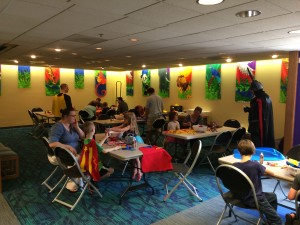
Other Amazing Activities- so many other things, drawing on the sidewalk next to your favorite cartoonist, dancing to the Shake-Ups in Ponyville, Awards ceremonies, ghosts, arts and crafts… So many things going on, my head is spinning.
Ok here’s the sad thing that I need to mention again- I didn’t get to do everything I wanted. I had to make choices. I didn’t get to all the venues- so many cool things and so few of me. You see Kids Read Comics wasn’t in just one place. The wonderful Ann Arbor District Library hosted many events, but so did the Ann Arbor Art Center, and Vault of Midnight Comics, and Robot Supply and Repair (826 Michigan). It was almost as if Ann Arbor had been taken over by comic book geeks and comic book geeks in the making… I’m now wanting to move, except I hear the further north you go, the colder it gets and I really have a thing against winter.
I’ll be going over my notes in the next few days to see how this will change my teaching, and this very comic. So here’s what I want YOU to consider- I’m around 4 hours away from this con- driving, and I went. What’s your excuse? I know I made a bunch of excuses over the years. If you live within a day’s drive and teach with, have comics in your classroom, or love all ages comics, the least you could do is take a day. You won’t regret it, in fact if you go next year and don’t learn something or discover something new, let me know, I’ll personally refund the cost of your registration to Kids Read Comics.*


